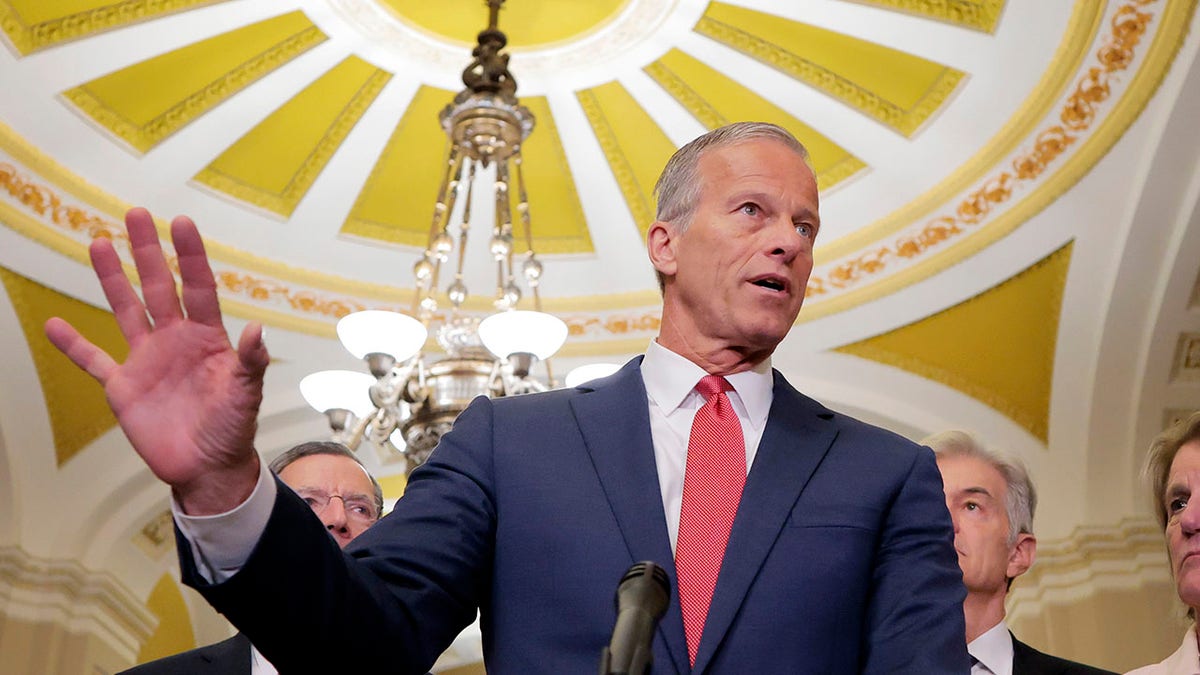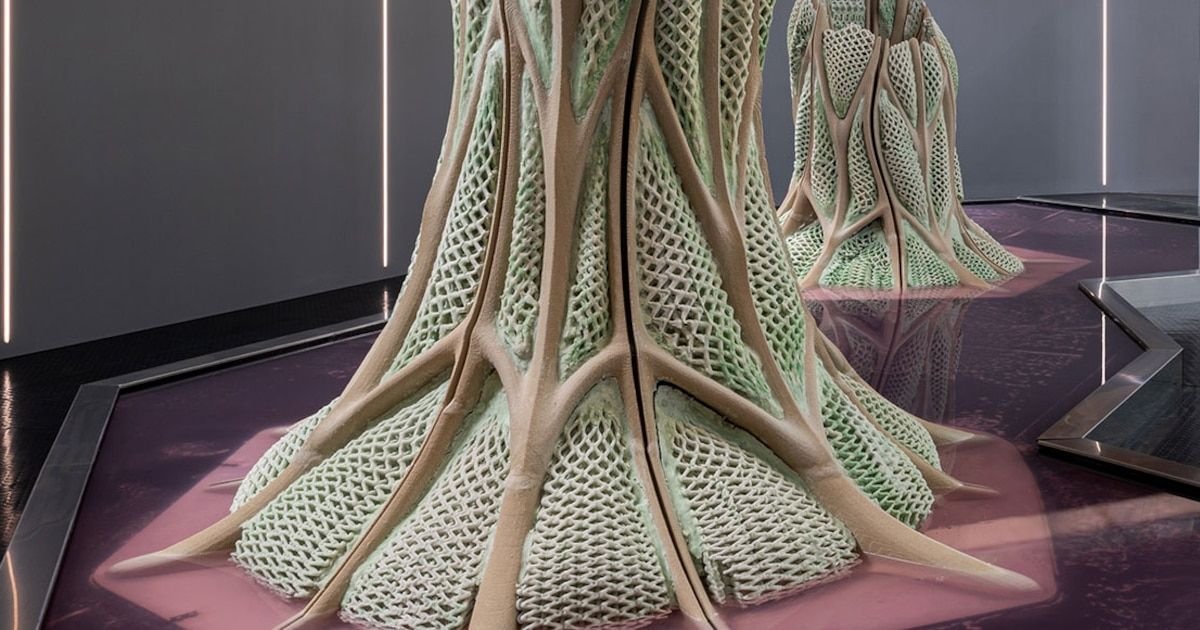INTERNACIONAL
White House torches Tim Walz’s speech about Trump’s ‘gulags,’ ‘chaos’: ‘His largest city burned to the ground’

The White House hit back hard Thursday at Minnesota Gov. Tim Walz’s state of the state address in which Kamala Harris’ former running mate slammed President Donald Trump over his immigration policies and other «chaos.»
«It’s rich of Tim ‘Jazz Hands’ Walz to decry chaos when he let his largest city burn to the ground while his wife opened their mansion’s windows to savor the fumes,» White House deputy press secretary Harrison Fields said in a statement to Fox News Digital, referring to the Minneapolis George Floyd riots of 2020. «Walz also willingly served alongside Vice President Harris, who presided over one of the most chaotic administrations in American history.»
The former Democratic vice presidential candidate used his state of the state address on Wednesday to criticize Trump and his administration for moving to deport illegal immigrants, including suspected gang members, as well as terrorist sympathizers.
«The president has also chosen, and I stress this, chosen, to tear up the values that once made America the shining light of the world. In this land of the free and home of the brave, we have university students being swept up, shoved into unmarked vans, and fathers being tossed into Salvadorian gulags without a hint of due process,» Walz claimed.
«I want to be real clear about this. If you say you love freedom, but you don’t believe freedom is for everybody, then the thing you love isn’t freedom, it’s privilege,» the governor said, garnering a standing ovation on the Minnesota House floor.
FEDERAL JUDGE DECLARES TRUMP ADMIN BLOCKING FEDERAL MONEY TO SANCTUARY CITIES UNCONSTITUTIONAL
Minnesota Gov. Tim Walz delivers his state of the state address before a joint session of the Legislature at the state Capitol in St. Paul, Minnesota, on Wednesday. (Jeff Wheeler/Star Tribune via AP)
Walz appeared to indirectly reference the case of Kilmar Abrego Garcia, an illegal immigrant and suspected member of MS-13, which the administration newly designated a foreign terrorist organization. The administration admitted to mistakenly deporting Abrego Garcia to El Salvador, though Trump and federal officials have doubled down on Abrego Garcia’s alleged ties to the violent Mexican gang, as well as a domestic violence case involving his wife claiming he beat her.
Abrego Garcia was initially suspected of human smuggling during a 2022 Tennessee traffic stop but was not charged. Democrats, categorizing Abrego Garcia as a «Maryland father,» meanwhile, have traveled to El Salvador to visit him while urging the administration to comply with Supreme Court and other court orders instructing that he be returned to the U.S.
Abrego Garcia was initially held at the El Salvadoran megaprison known as the Terrorism Confinement Center (CECOT), but he has since been transferred to the lower security Centro Industrial Penitentiary facility in Santa Ana, El Salvador. The State Department said in court filings he remains held there «in good conditions and in an excellent state of health.»

Minnesota Gov. Tim Walz speaks at a town hall event in Des Moines, Iowa. (AP Photo/Matthew Putney)
Walz also appeared to excoriate how federal immigration authorities have taken into custody foreign students whose visas were rescinded by the Trump administration for allegedly organizing anti-Israel demonstrations at U.S. college campuses.
Though Walz did not mention anyone by name, another group of House Democrats traveled to Louisiana detention facilities holding Tufts University fifth-year doctoral student Rümeysa Öztürk and former Columbia University graduate student Mahmoud Khalil this week.
FEDERAL JUDGE ALLEGES ‘WILLFUL AND BAD FAITH REFUSAL’ TO COMPLY IN ABREGO GARCIA DEPORTATION CASE
The Democratic governor also took jabs at Elon Musk and the Department of Government Efficiency, claiming that the Trump administration wants to take Medicaid coverage away.

Minnesota Gov. Tim Walz acknowledges the applause of the House chamber before he delivers his state of the state address before a joint session of the Legislature at the state Capitol in St. Paul, Minnesota, on Wednesday. (Jeff Wheeler/Star Tribune via AP)
«I can’t help but point out that we also gather at a moment of great uncertainty for our nation. And let’s be honest, this uncertainty, this chaos is no accident,» Walz said. «The President of the United States has chosen, chosen to destroy the federal government’s ability to help people. He literally hired the richest man in the world to take a chainsaw to the basic services that Minnesotans rely on to build better lives. His plan leaves nobody there working to prevent the next pandemic, nobody to pick up the phone at the Social Security office, nobody making sure kids with special needs get the quality education they deserve.»
He also slammed Trump over his reciprocal tariffs policies, alleging the Republican president is out of touch with working-class Americans.
CLICK HERE TO GET THE FOX NEWS APP
«And on an hour by hour, day by day basis, the President of the United States has chosen, chosen to throw our economy into turmoil,» Walz said. «Global markets are teetering on the brink of collapse. Businesses across this country and here in Minnesota are already laying off employees by the thousands. Working people are paying more for basic goods, and if you haven’t checked your 401k lately, don’t do it. So let’s be very clear. None of this had to happen. When the president took office three months ago, there was no reason to throw a wrench in the works and destroy decades of work. But if you listen to anything that comes out of his mouth, one thing has become clear. He’s just plain confused about how the world really works for working people.»
Minnesota,Tim Walz,Donald Trump,Illegal Immigrants,Immigration
INTERNACIONAL
Rusia lanzó un ataque masivo con drones en el sur de Ucrania: al menos dos personas murieron y 6 resultaron heridas

Al menos dos personas murieron y seis resultaron heridas este sábado en la ciudad de Odesa, en el sur de Ucrania, tras un ataque con drones rusos contra zonas residenciales, según informaron autoridades locales. Las víctimas mortales son un matrimonio que convivía en una de las viviendas alcanzadas por los proyectiles.
“Los servicios de rescate acaban de encontrar los cuerpos de una pareja que falleció cuando un dron enemigo impactó su apartamento. Mi más sentido pésame a la familia y seres queridos de los fallecidos. Continúan los trabajos para eliminar las consecuencias del ataque”, declaró el alcalde de Odesa, Gennadi Trujanov, a través de su canal en Telegram.
El ataque ocurrió pocas horas después de que Trujanov alertara sobre la entrada de artefactos no tripulados en la región. Poco después, confirmó el impacto sobre edificios residenciales y varios vehículos, provocando la muerte de la pareja y lesiones en otros civiles.
El gobernador regional, Oleg Kiper, informó que seis personas resultaron heridas, entre ellas dos niños de siete y tres años. “Actualmente, dos niños heridos en el ataque ruso se encuentran en centros médicos: un niño de 7 años en estado moderado y un niño de tres años que resultó intoxicado por productos de combustión”, afirmó Kiper en su cuenta de Telegram. Todos los heridos se encuentran hospitalizados, la mayoría en estado leve.

Este nuevo ataque se produce en un contexto de intensificación de los bombardeos rusos sobre el territorio ucraniano.
Horas antes, las autoridades ucranianas habían reportado la muerte de al menos cinco personas en la ciudad de Samar, en la provincia de Dnipropetrovsk, como consecuencia de otro ataque. En esa misma región, los bombardeos de esta semana acumulan ya una veintena de víctimas mortales.
Las autoridades locales de Odesa mantienen en curso las labores de rescate y desescombro, mientras continúa la vigilancia ante nuevos posibles ataques aéreos. La ciudad, situada a orillas del mar Negro, ha sido blanco frecuente de ofensivas rusas, en especial con el uso de drones y misiles de largo alcance dirigidos a infraestructuras civiles.

Ucrania acusó el viernes a China, India, Emiratos Árabes Unidos y Armenia, entre otros países, de colaborar indirectamente con Rusia al facilitar el acceso a componentes militares utilizados en el conflicto, que ya supera los tres años de duración.
El director adjunto del Servicio de Seguridad de Ucrania (SBU), Serguí Naumiuk, afirmó que estos países operan como intermediarios en una cadena que permite al Kremlin sortear los paquetes de sanciones internacionales impuestos desde el inicio de la invasión a gran escala en 2022.

“Una cadena de intermediarios como China, India, los Emiratos Árabes Unidos y algunos países de la antigua Comunidad de Estados Independientes, principalmente Kazajistán y Armenia, ayudan a la Federación de Rusia a eludir las sanciones para comprar componentes militares”, aseguró Naumiuk.
El funcionario detalló que esta red facilita el acceso ruso a tecnología avanzada, necesaria para mantener su capacidad bélica. En el caso de los misiles de crucero Kh-101, ampliamente utilizados por el Ejército ruso, Naumiuk explicó que se han identificado hasta 250 componentes electrónicos de origen occidental en su estructura.
También señaló que “otros sistemas parecidos pueden tener medio centenar” de estas piezas, lo que demuestra —según Kiev— la persistente dependencia tecnológica de Rusia respecto a mercados internacionales.

Además, el representante de inteligencia ucraniano destacó el caso de los drones iraníes Shahed, utilizados por Moscú en numerosos ataques. Según explicó, dependiendo de la serie y el modelo, estos aparatos pueden incluir hasta 400 componentes importados procedentes de empresas localizadas en países de distintas regiones.
Entre las naciones mencionadas en relación con el suministro indirecto de estas piezas se encuentran Austria, Bulgaria, Dinamarca, Brasil, España, Italia, Malasia, Países Bajos, Alemania, Portugal, Serbia, Estados Unidos, Finlandia, Francia, República Checa, Suiza y Suecia.
(Con información de Europa Press)
Europe,Military Conflicts,ODESA
INTERNACIONAL
Trump’s ‘big, beautiful bill’ faces Republican family feud as Senate reveals its final text

NEWYou can now listen to Fox News articles!
Senate Republicans unveiled their long-awaited version of President Donald Trump’s «big, beautiful bill,» but its survival is not guaranteed.
Senate Budget Committee Chair Lindsey Graham, R-S.C., revealed the stitched-together text of the colossal bill late Firday night.
The final product from the upper chamber is the culmination of a roughly month-long sprint to take the House GOP’s version of the bill and mold and change it. The colossal package includes separate pieces and parts from 10 Senate committees. With the introduction of the bill, a simple procedural hurdle must be passed in order to begin the countdown to final passage.
When that comes remains an open question. Senate Republicans left their daily lunch on Friday under the assumption that a vote could be teed up as early as noon on Saturday.
HOUSE CONSERVATIVES GO TO WAR WITH SENATE OVER TRUMP’S ‘BIG, BEAUTIFUL BILL’
President Donald Trump on June 18, 2025. (BRENDAN SMIALOWSKI/AFP via Getty Images)
Sen. John Kennedy, R-La., told Fox News Digital that he had «strongly encouraged» Senate Majority Leader John Thune, R-S.D., to put the bill on the floor for a vote Saturday afternoon.
«If you’re unhappy with that, you’re welcome to fill out a hurt feelings report, and we will review it carefully later,» Kennedy said. «But in the meantime, it’s time to start voting.»
But Senate Republicans’ desire to impose their will on the package and make changes to already divisive policy tweaks in the House GOP’s offering could doom the bill and derail Thune’s ambitious timeline to get it on Trump’s desk by the July 4 deadline.
However, Thune has remained firm that lawmakers would stay on course and deliver the bill to Trump by Independence Day.
When asked if he had the vote to move the package forward, Thune said «we’ll find out tomorrow.»
TOP TRUMP HEALTH OFFICIAL SLAMS DEMOCRATS FOR ‘MISLEADING’ CLAIMS ABOUT MEDICAID REFORM
But it wasn’t just lawmakers who nearly derailed the bill. The Senate parliamentarian, the true final arbiter of the bill, ruled that numerous GOP-authored provisions did not pass muster with Senate rules.
Any item in the «big, beautiful bill» must comport with the Byrd Rule, which governs the budget reconciliation process and allows for a party in power to ram legislation through the Senate while skirting the 60-vote filibuster threshold.

Senate Majority Leader John Thune speaks during a news conference following the weekly Senate Republican policy luncheon at the U.S. Capitol on June 17, 2025, in Washington. (Getty Images)
That sent lawmakers back to the drawing board on a slew of policy tweaks, including the Senate’s changes to the Medicaid provider tax rate, cost-sharing for food benefits and others.
Republican leaders, the White House and disparate factions within the Senate and House GOP have been meeting to find middle ground on other pain points, like tweaking the caps on state and local tax (SALT) deductions.
While the controversial Medicaid provider tax rate change remained largely the same, a $25 billion rural hospital stabilization fund was included in the bill to help attract possible holdouts that have raised concerns that the rate change would shutter rural hospitals throughout the country.
On the SALT front, there appeared to be a breakthrough on Friday. A source told Fox News that the White House and House were on board with a new plan that would keep the $40,000 cap from the House’s bill and have it reduced back down to $10,000 after five years.
But Senate Republicans are the ones that must accept it at this stage. Sen. Markwayne Mullin, R-Okla., has acted as the mediator in those negotiations, and said that he was unsure if any of his colleagues «love it.»
«But I think, as I’ve said before, I want to make sure we have enough that people can vote for than to vote against,» he said.
Still, a laundry list of other pocket issues and concerns over just how deep spending cuts in the bill go have conservatives and moderates in the House GOP and Senate pounding their chests and vowing to vote against the bill.
Republican leaders remain adamant that they will finish the mammoth package and are gambling that some lawmakers standing against the bill will buckle under the pressure from the White House and the desire to leave Washington for a short break.
Once a motion to proceed is passed, which only requires a simple majority, then begins 20 hours of debate evenly divided between both sides of the aisle.
‘BABY STEPS’: LEADER THUNE DETAILS HIS WORK TO CORRAL REPUBLICANS BEHIND TRUMP’S LEGISLATIVE VISION

House Speaker Mike Johnson speaks during a news conference at the U.S. Capitol Building on April 1, 2025, in Washington. (Anna Moneymaker/Getty Images)
Democratic lawmakers are expected to spend the entirety of their 10 allotted hours, while Republicans will likely clock in well below their limit. From there starts the «vote-a-rama» process, when lawmakers can submit a near-endless number of amendments to the bill. Democrats will likely try to extract as much pain as possible with messaging amendments that won’t actually pass but will add more and more time to the process.
CLICK HERE TO GET THE FOX NEWS APP
Once that is complete, lawmakers will move to a final vote. If successful, the «big, beautiful bill» will again make its way back to the House, where House Speaker Mike Johnson, R-La., will again have to corral dissidents to support the legislation. It barely advanced last month, squeaking by on a one-vote margin.
Treasury Secretary Scott Bessent hammered on the importance of passing Trump’s bill on time. He met with Senate Republicans during their closed-door lunch and spread the message that advancing the colossal tax package would go a long way to giving businesses more certainty in the wake of the president’s tariffs.
«We need certainty,» he said. «With so much uncertainty, and having the bill on the president’s desk by July 4 will give us great tax certainty, and I believe, accelerate the economy in the third quarter of the year.»
INTERNACIONAL
Un hidrogel con cianobacterias podría ser una solución para combatir el cambio climático

Un material puede hacer que las paredes de un edificio ayuden a limpiar el aire que las rodea y a mitigar el problema del cambio climático. Eso no es magia: es el resultado de un avance científico real realizado en una universidad pública de Suiza.
Fue realizado por investigadores de ETH Zurich, la institución que fue fundada en 1855 y tuvo como alumnos al físico Albert Einstein y a otros 21 ganadores de Premios Nobel. Incluyeron cianobacterias dentro de un hidrogel, que es un polímero inerte, y obtuvieron un material vivo artificial.
El nuevo material es capaz de capturar dióxido de carbono (CO₂) de manera eficaz, mientras genera minerales que lo almacenan de forma estable. Los resultados fueron publicados en la revista Nature Communications.

Significa que, además de transformar el CO2 en biomasa a través de la fotosíntesis, las cianobacterias inducen la formación de minerales y así se consigue un almacenamiento mucho más duradero y seguro del carbono capturado en el propio material.
Consideran que la innovación podría ofrecer una solución escalable y sostenible que elimina el CO₂ de la atmósfera al emplear procesos naturales.

El dióxido de carbono siempre ha estado presente en la atmósfera. Es parte natural del aire que se respira y del ciclo del carbono del planeta.
Pero su presencia aumentó por actividades humanas como la quema de combustibles fósiles (petróleo, gas, carbón) y la deforestación.
Este exceso de CO₂ atrapa calor en la atmósfera y eso condujo a que las temperaturas globales suban, los glaciares se derritan, los océanos se calienten, entre otros impactos.
El CO₂ no es “malo” en sí mismo: las plantas lo necesitan para hacer fotosíntesis. Pero en exceso desequilibra el sistema.
Científicos de todo el mundo buscan formas efectivas de capturar ese CO₂ para defender la salud del planeta.

La mayoría de los métodos conocidos hasta ahora son costosos, requieren mucha energía o no consiguen guardar el carbono durante mucho tiempo.
Algunos grupos han probado con técnicas químicas y otros con organismos vivos como plantas y algas.
Pero, hasta este avance, no se había combinado con éxito un material inerte y un organismo vivo que sigue activo dentro del hidrogel y tiene capacidad de almacenar carbono en formas estables.
El equipo de ETH Zurich decidió enfrentar el desafío de hacer algo muy diferente.

Para fabricar el nuevo material, el equipo usó un hidrogel, que es como una esponja blanda hecha con polímeros. Este gel deja pasar agua, luz y CO₂.
Dentro del hidrogel colocaron millones de cianobacterias, microorganismos que viven en la Tierra desde hace millones de años y pueden hacer fotosíntesis.
Las cianobacterias usan la luz solar para transformar el CO₂ del aire en alimento y oxígeno. También producen una reacción especial: su actividad provoca la formación de minerales sólidos, como la cal, que guarda el CO₂ por mucho tiempo dentro del gel.
El equipo utilizó impresión 3D para dar forma al material y optimizar la entrada de luz, agua y nutrientes. Así crearon piezas y bloques que funcionan bien para proyectos grandes.

Dalia Dranseike, quien fue primera autora del trabajo junto con Yifan Cui, explicó: “El material tiene estructuras que dejan pasar luz y distribuyen el líquido con nutrientes gracias a la capilaridad”.
El material logró resultados increíbles: en el laboratorio, pudo atrapar CO₂ de forma constante durante 400 días.
Cada gramo retuvo 26 miligramos de CO₂, y superó a otros métodos como el llamado “hormigón reciclado”. Los minerales que se forman en su interior vuelven el material más fuerte y resistente.
Las posibles aplicaciones van más allá de los experimentos. Los investigadores imaginan que el nuevo material se podría usar en edificios, fachadas y objetos urbanos para limpiar el aire y ayudar a combatir el cambio climático.

Después de los éxitos en el laboratorio, el equipo de ETH Zurich llevó su material a exposiciones internacionales de arquitectura. Andrea Shin Ling, arquitecta y miembro del equipo, fue clave en este paso.
En la Bienal de Arquitectura de Venecia montaron troncos de hasta tres metros de alto, formados por el material vivo que contiene cianobacterias. Cada tronco puede capturar 18 kilos de CO₂ por año, similar a lo que absorbe un pino adulto.
La arquitecta contó que el mayor desafío fue escalar el proceso, ya que fabricar piezas grandes es muy diferente al trabajo de laboratorio.
En tanto, en la Trienal de Milán, cubrieron tejas de madera con el hidrogel y las cianobacterias. Con el tiempo, formaron una “piel” verde sobre la madera, un signo claro de que las bacterias seguían vivas y activas capturando CO₂.
Observar el cambio de color y el trabajo de las cianobacterias resultó emocionante para el equipo.

En diálogo con Infobae, la doctora Graciela Salerno, investigadora superior del Conicet en cianobacterias y biotecnología, profesora emérita de la Universidad Nacional de Mar del Plata y vicepresidente del Comité Ejecutivo de la Fundación para Investigaciones Biológicas Aplicadas (FIBA), comentó: “Se busca desde hace varias décadas en diferentes laboratorios, el desarrollo de métodos de secuestro de dióxido de carbono a través de materiales fotosintéticos”.

Tras leer el estudio publicado en Nature Communications, la doctora Salerno, quien no participó en la investigación, opinó que los investigadores de Suiza “le han dado una vuelta interesante y desarrollaron una innovación que combina el poder de las cianobacterias con ingeniería de materiales”.
Además, la científica expresó: “Si bien falta aún escalar la producción y evaluar su implementación práctica, el hidrogel podría ser una estrategia más para combatir al cambio climático. Por supuesto, también se necesita que se reduzcan las emisiones de gases de efecto de invernadero para no seguir agravando el problema”.
-

 POLITICA1 día ago
POLITICA1 día agoDesconfianza de los intendentes del PRO sobre el avance de las negociaciones con LLA: “Hasta ahora nadie acercó una propuesta”
-

 POLITICA2 días ago
POLITICA2 días agoJavier Milei apuntó duro al Chiqui Tapia por la eliminación de River y Boca: “Le hace mal al fútbol”
-

 POLITICA2 días ago
POLITICA2 días agoDetuvieron a una funcionaria del Ministerio de la Mujer bonaerense por el ataque a la casa de José Luis Espert































